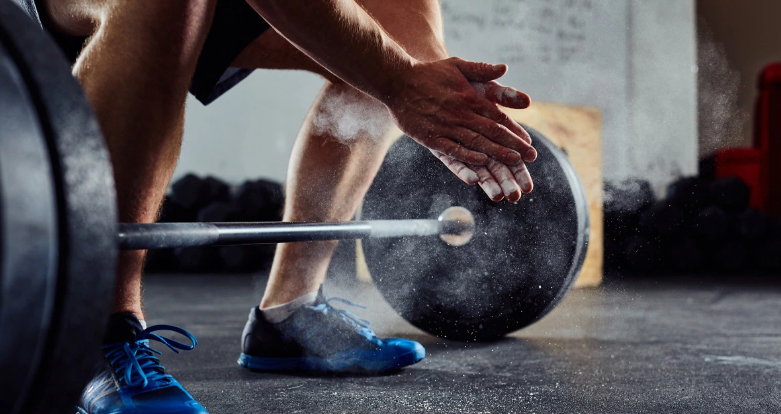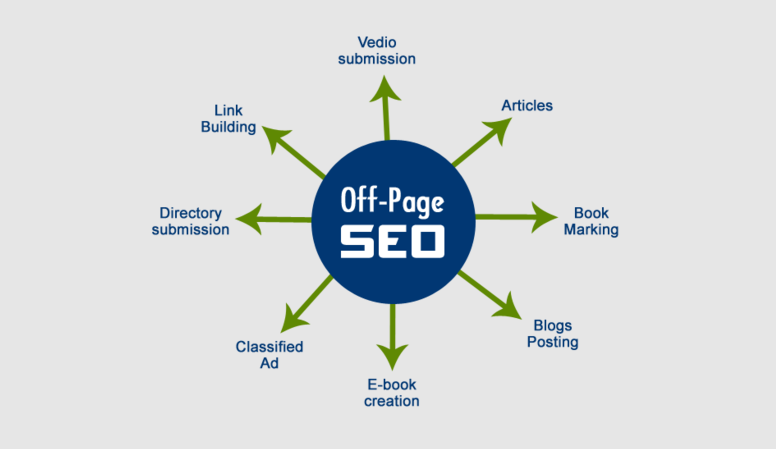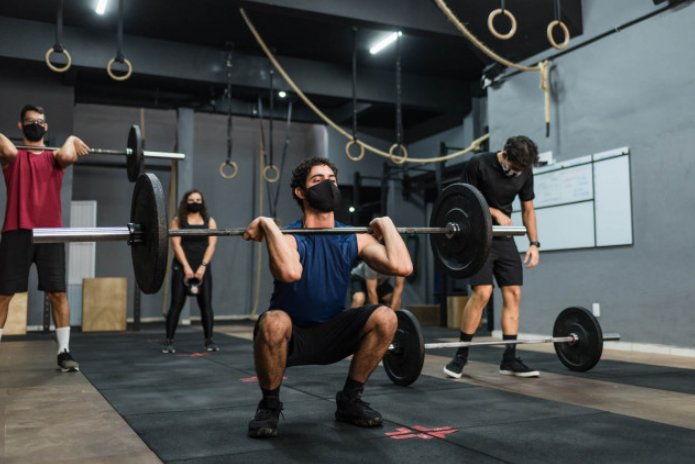In the digital age, having a strong online presence is essential for businesses, including gyms and fitness centers. As more people turn to the internet to find information and services, it becomes crucial for gym owners to leverage search engine optimization (SEO) techniques to improve their website’s visibility and attract potential customers. In this article, we will explore the world of gym SEO and how hiring a specialized gym SEO agency can help your fitness business thrive in the online landscape. Let’s know more about some actionable SEO techniques.
With the increasing competition in the fitness industry, simply having a gym website is not enough. You need to ensure that your website ranks high in search engine results when potential customers search for relevant keywords such as “best gym in [location]” or “fitness classes near me.” This is where SEO comes into play. Gym SEO involves optimizing your website and online presence to appear prominently in search engine results, attracting more organic traffic and potential customers.
Table of Contents
What is SEO for Gym Websites?
SEO, or search engine optimization, is a set of strategies and techniques used to improve a website’s visibility in search engine results pages (SERPs). Gym SEO focuses on optimizing gym and fitness-related websites to rank higher in search results when users search for fitness-related keywords or phrases. By implementing SEO best practices, gym owners can improve their online presence, reach a wider audience, and increase their chances of converting website visitors into paying customers.
The Importance of SEO for Gym Businesses

In today’s highly competitive digital landscape, having a strong online presence is crucial for the success of any business, and gyms are no exception. Here are some key reasons why SEO is important for gym businesses:
Increased Visibility
With effective SEO strategies, your gym website can appear on the first page of search engine results, making it more visible to potential customers. Studies have shown that websites listed on the first page of search results receive the majority of organic traffic.
Targeted Traffic
SEO allows you to target specific keywords and phrases that your potential customers are likely to search for. By optimizing your website for these keywords, you can attract highly targeted traffic, increasing the likelihood of converting visitors into paying customers.
Brand Authority
When your gym website ranks high in search results, it creates a sense of credibility and authority in the minds of potential customers. People are more likely to trust and choose a gym that appears at the top of search engine results.
Cost-Effective Marketing
Compared to traditional advertising methods, SEO is a cost-effective marketing strategy. Once your website is optimized and ranks well in search results, you can enjoy continuous organic traffic without having to pay for every click or impression.
Long-Term Results
Unlike paid advertising campaigns that stop generating traffic as soon as the budget runs out, SEO provides long-term results. By consistently implementing SEO strategies, you can maintain and improve your website’s rankings over time, leading to sustained visibility and business growth.
Understanding the Target Audience

Before diving into the technical aspects of gym SEO, it is crucial to understand your target audience. Who are the potential customers you want to attract to your gym? What are their preferences, goals, and pain points? By gaining a deep understanding of your target audience, you can tailor your actionable SEO techniques and content to resonate with their needs and interests.
Start by conducting market research to identify the demographics, interests, and behaviors of your target audience. Use tools like Google Analytics to gather data about your website visitors, such as their age, location, and browsing patterns. This information will help you create targeted content that appeals to your audience and improves your SEO efforts.
Keyword Research for Gym SEO
Keyword research is the foundation of any successful SEO campaign. It involves identifying the keywords and phrases that your target audience is using to search for gym-related services. By targeting the right keywords, you can optimize your website to rank higher in relevant search results.
Start by brainstorming a list of potential keywords related to your gym business. Think about the services you offer, the location of your gym, and the specific target audience you want to attract. For example, if you run a yoga studio in New York, some potential keywords could be “yoga classes in New York,” “best yoga studio NYC,” or “New York yoga instructors.”
Next, use keyword research tools such as Google Keyword Planner, SEMrush, or MOZ Keyword Explorer to expand your keyword list and find additional relevant keywords. These tools provide data on search volume, competition, and related keywords, helping you choose the most valuable keywords for your gym SEO.
Once you have a list of target keywords, strategically incorporate them into your website’s content, including titles, headings, meta descriptions, and body text. However, it’s important to maintain a natural and conversational tone, avoiding keyword stuffing that can negatively impact your SEO efforts.
On-Page Optimization for Gym Websites
On-page optimization refers to the optimization techniques applied directly on your gym website to improve its search engine rankings. Here are several key elements to consider for effective on-page optimization:
Title Tags and Meta Descriptions
The title tag is the main headline that appears in search engine results and at the top of the browser tab when someone visits your website. It should accurately describe the content of the page and include relevant keywords. Keep the title tag concise, preferably under 60 characters, to ensure it displays fully in search results.
The meta description is a brief summary of the page’s content that appears below the title tag in search results. It should be engaging, persuasive, and include relevant keywords. The meta description should be around 150-160 characters long and encourage users to click on your website.
Header Tags
Utilize header tags (H1, H2, H3, etc.) to structure your website’s content and make it more readable for both users and search engines. The H1 tag should be reserved for the main heading of the page and should include relevant keywords. Subheadings (H2, H3, etc.) can be used to divide the content into sections and subsections, making it easier for users to navigate and for search engines to understand the hierarchy of the information.
Content Optimization
Create high-quality and engaging content that provides value to your target audience. Incorporate relevant keywords naturally throughout the content, but prioritize the reader’s experience over keyword density. Use descriptive and engaging language, and include variations of your target keywords to increase the relevance of your content.
Ensure that your content is comprehensive, addressing common questions and concerns related to fitness and gym services. This not only helps with SEO but also establishes your gym as a trusted source of information, increasing the likelihood of attracting and retaining customers.
Image Optimization
Optimize the images on your gym website by using descriptive filenames and adding relevant alt text. This helps search engines understand the content of the images and improves accessibility for visually impaired users. Compress the images to reduce file sizes and improve page loading speed, which is another important factor for SEO.
Internal Linking
Internal linking involves linking relevant pages and content within your gym website. This not only helps users navigate your site but also allows search engines to discover and index more pages. Include internal links in your content, using relevant anchor text that includes keywords. However, avoid excessive internal linking that may appear spammy or disrupt the user experience.
Mobile Optimization
In today’s mobile-first world, optimizing your gym website for mobile devices is essential. Ensure that your website is mobile-friendly, with a responsive design that adjusts seamlessly to different screen sizes. Mobile optimization is not only important for user experience but also a ranking factor in Google’s mobile search results.
Off-Page Optimization for Gym Websites

Off-page optimization focuses on activities outside of your website that can impact its search engine rankings. Here are some key off-page optimization strategies for gym websites:
Backlink Building
Backlinks, or inbound links, are links from other websites that point to your gym website. They are an important off-page ranking factor and can significantly improve your website’s authority and credibility in the eyes of search engines. Focus on acquiring high-quality backlinks from reputable fitness-related websites, industry influencers, and local directories. Consider reaching out to fitness bloggers, partnering with local businesses, or participating in community events to build valuable backlinks.
Social Media Engagement
Social media plays a crucial role in off-page optimization. Engage with your audience on social media platforms by sharing valuable content, responding to comments and messages, and encouraging social sharing of your gym website’s content. The more your content is shared and linked to on social media, the higher its visibility and potential for attracting backlinks.
Online Directories and Listings
Ensure that your gym is listed in relevant online directories and local listings. This includes platforms like Google My Business, Yelp, Yellow Pages, and other fitness-specific directories. Provide accurate and consistent information such as your gym’s name, address, phone number, and website. Optimizing your listings helps improve your local SEO and increases your chances of appearing in local search results when users search for gyms or fitness centers in your area.
Influencer Marketing
Collaborating with fitness influencers and industry experts can help increase the visibility of your gym website. Partner with influencers who have a strong online presence and a relevant audience. They can promote your gym, share their experiences, and provide testimonials that can attract more visitors to your website.
Local SEO for Gym Businesses
For gyms and fitness centers, local SEO is crucial for targeting customers in your specific geographic area. Here are some key strategies for improving your local SEO.
Claim and Optimize your Google My Business Listing
Ensure that your gym is listed on Google My Business and provide accurate and up-to-date information about your business. Encourage customers to leave reviews, respond to reviews promptly, and post regular updates and offers.
Local Keyword Targeting
Incorporate local keywords throughout your website’s content. This includes mentioning your city or neighborhood in your headings, titles, and meta descriptions. For example, “Best Gym in [City]” or “Fitness Classes in [Neighborhood].”
Online Reviews and Ratings
Location-specific Landing Pages
If you have multiple gym locations, create individual landing pages for each location. Optimize these pages with location-specific keywords and provide detailed information about the services, amenities, and staff at each location.
Local Content and Community Engagement
Tracking and Analytics for Gym SEO

To measure the effectiveness of your gym SEO efforts, it is important to track and analyze relevant data. Here are some key metrics and tools to consider.
Organic Traffic
Monitor the amount of organic traffic your website receives from search engines. Tools like Google Analytics provide insights into the number of visitors, their behavior, and the keywords they used to find your website.
Keyword Rankings
Track the rankings of your target keywords in search engine results. Tools like SEMrush or MOZ can help you monitor keyword positions and identify opportunities for improvement.
Conversion rates
Measure the percentage of website visitors who take desired actions, such as signing up for a membership, requesting a consultation, or making a purchase. This helps you evaluate the effectiveness of your SEO efforts in driving conversions.
Backlink Analysis
Monitor the number and quality of backlinks pointing to your website. Tools like Ahrefs or Majestic can provide insights into your backlink profile, helping you identify opportunities for building more high-quality backlinks. By regularly analyzing these metrics and making data-driven adjustments to your gym SEO strategies, you can continuously improve your website’s performance and drive more targeted traffic to your gym.
FAQs
How long does it take to see results from gym SEO?
SEO is a long-term strategy, and it takes time to see significant results. It usually takes several months to start noticing improvements in your search engine rankings and organic traffic. Consistency and patience are key when it comes to SEO.
Do I need technical knowledge to implement gym SEO strategies?
While having some technical knowledge can be helpful, it’s not necessary to implement basic actionable SEO techniques for your gym. Many aspects of SEO can be learned and implemented with the help of user-friendly tools and resources available online.
Should I hire an SEO agency for my gym?
Hiring an SEO agency can be a valuable investment for your gym if you lack the time, expertise, or resources to implement SEO strategies yourself. An experienced agency can provide a tailored approach and help you achieve optimal results.
What are the ongoing SEO activities I should consider for my gym?
SEO is an ongoing process. Some essential activities include regularly creating high-quality content, monitoring keyword rankings and website analytics, building and maintaining backlinks, and staying up-to-date with algorithm changes and industry trends.
Can local SEO benefit my gym business?
Absolutely! Local SEO is especially important for gyms as it helps you target customers in your specific geographic area. By optimizing your website for local search, you can attract nearby individuals actively seeking fitness services.
Conclusion
In today’s digital age, optimizing your gym website for search engines is crucial for attracting potential customers and growing your fitness business. By implementing actionable SEO techniques, both on-page and off-page, you can increase your website’s visibility in search engine results and drive more organic traffic to your gym.
Remember to conduct thorough keyword research, optimize your website’s content and structure, build high-quality backlinks, engage with your local community, and track your SEO performance using analytics tools. Additionally, consider the benefits of hiring a specialized gym SEO agency that can provide expertise and a tailored approach to help your fitness business thrive online. by implementing actionable SEO techniques. With the right strategies in place, your gym can rise above the competition and attract a steady stream of motivated individuals eager to achieve their fitness goals.
Don’t miss out on the opportunity to enhance your gym’s online visibility and reach. Implementing effective SEO practices can make a significant difference in your digital marketing efforts. So, take action today and watch your gym soar to new heights.






